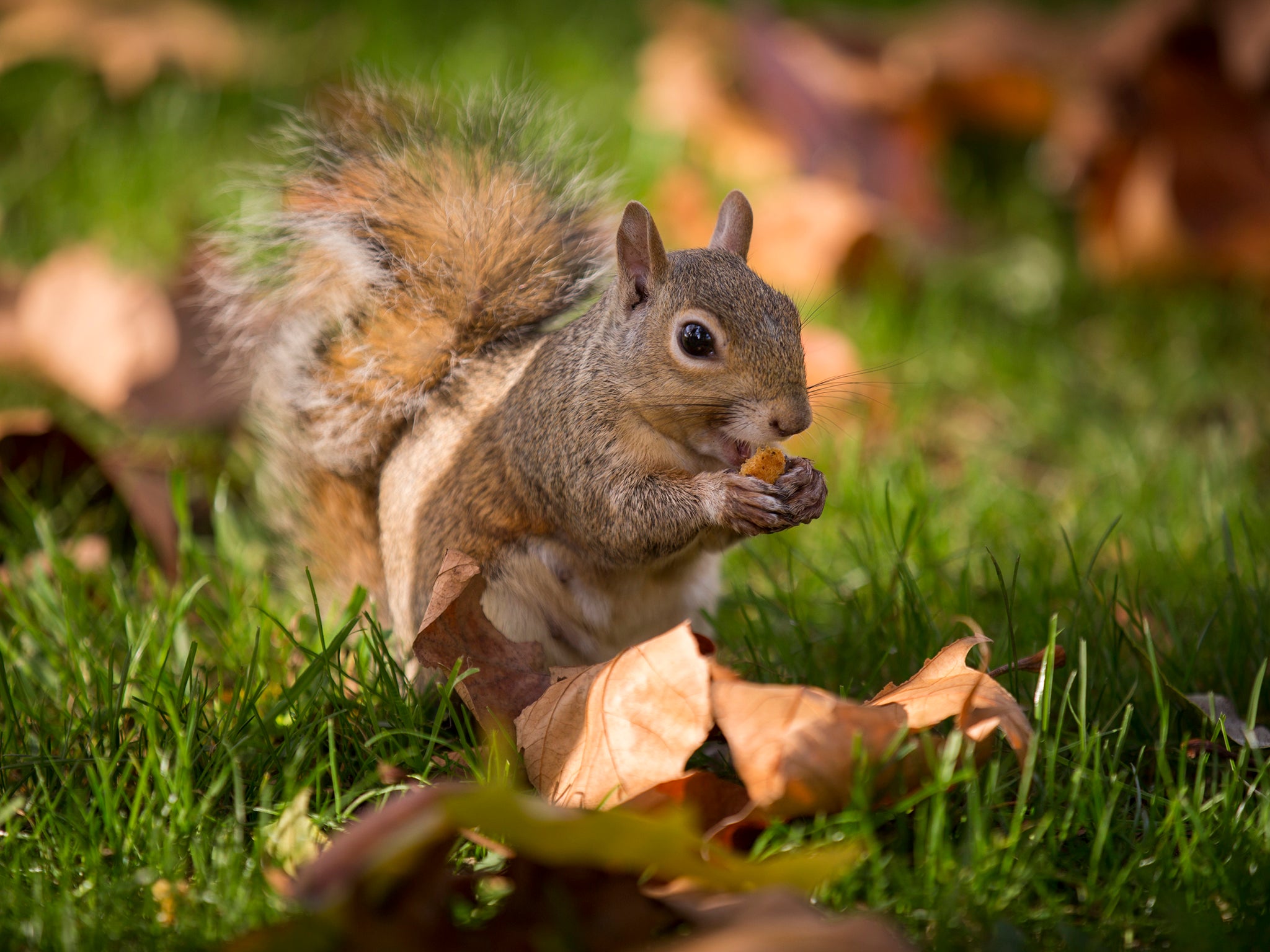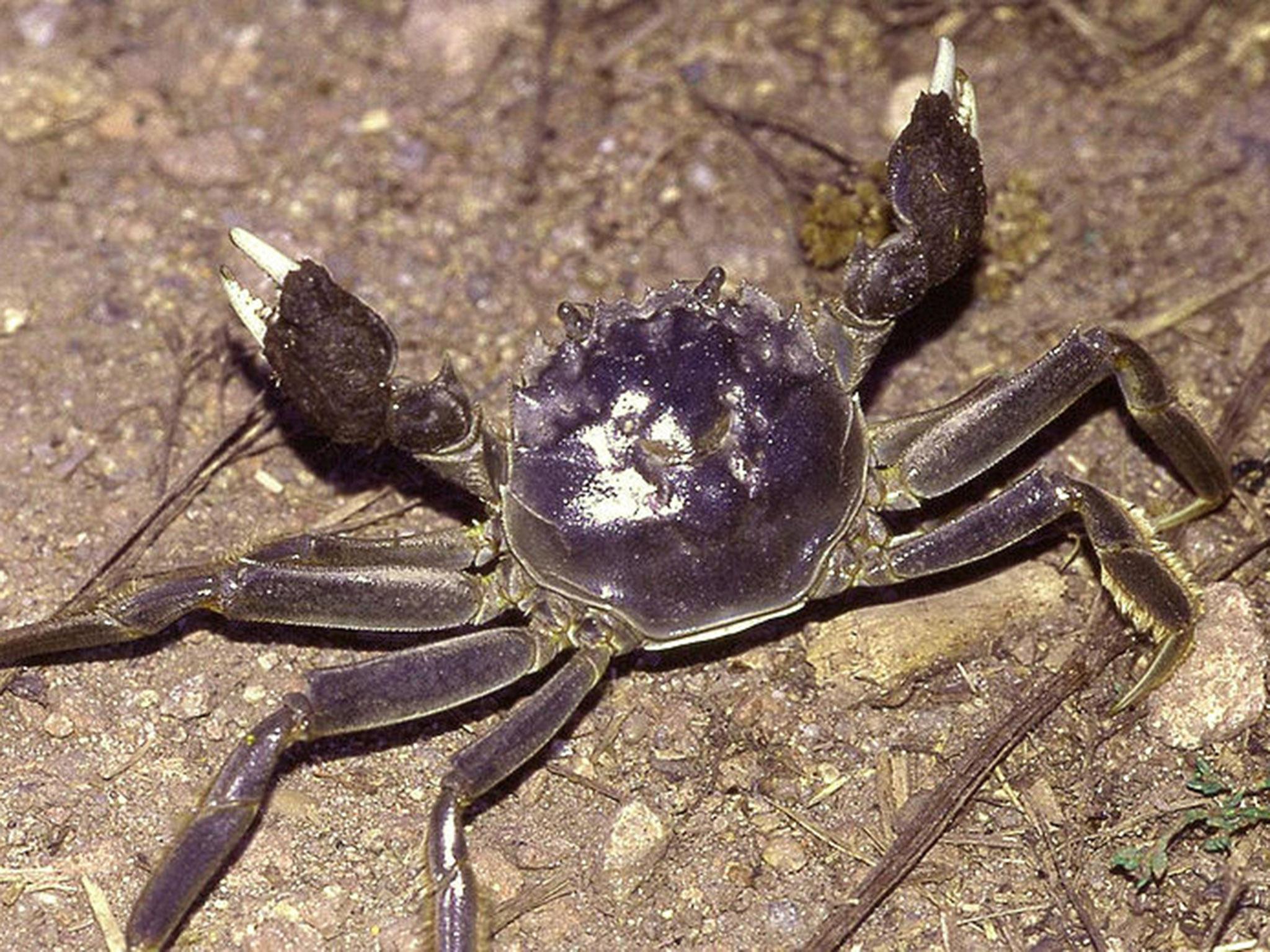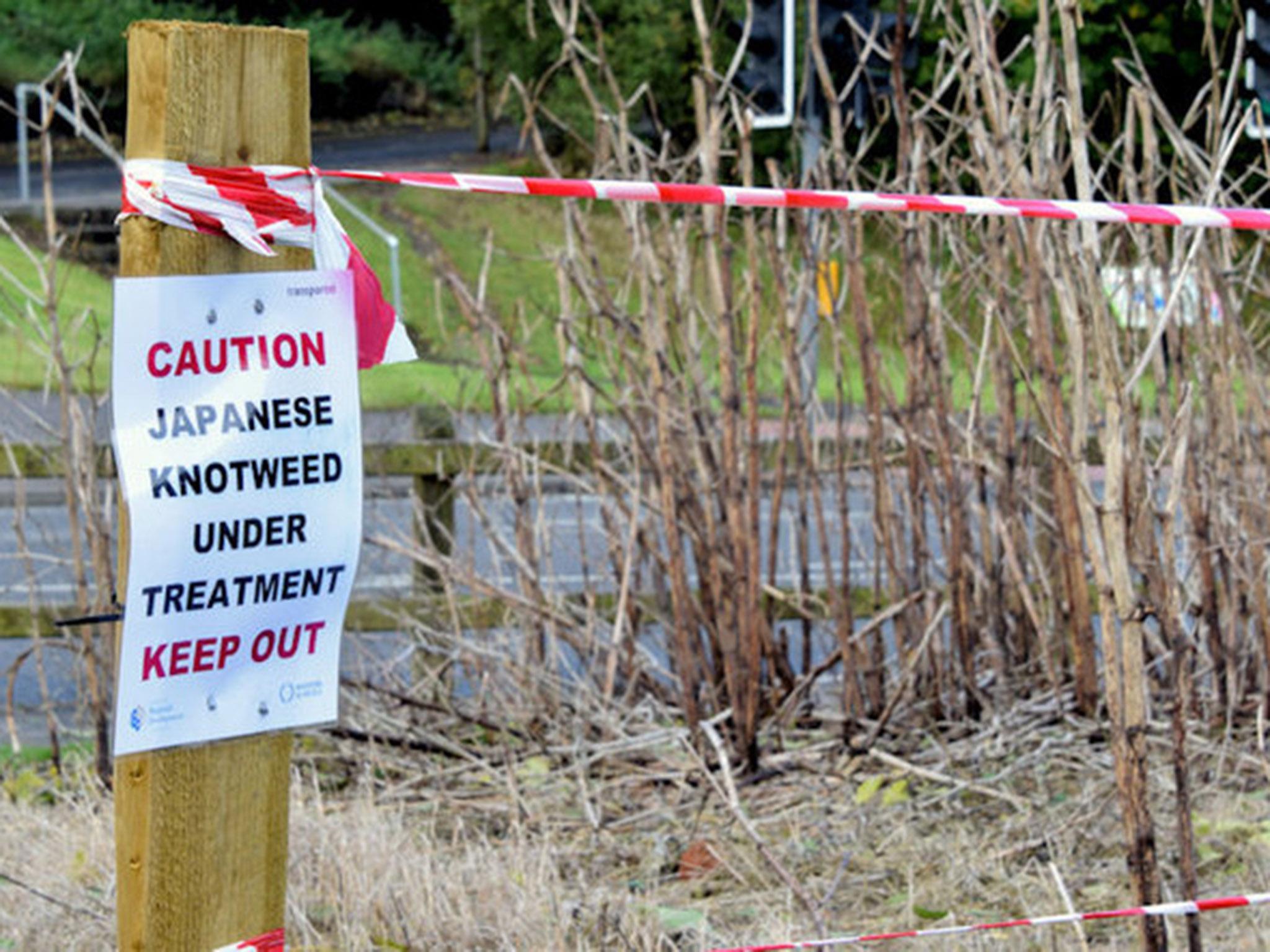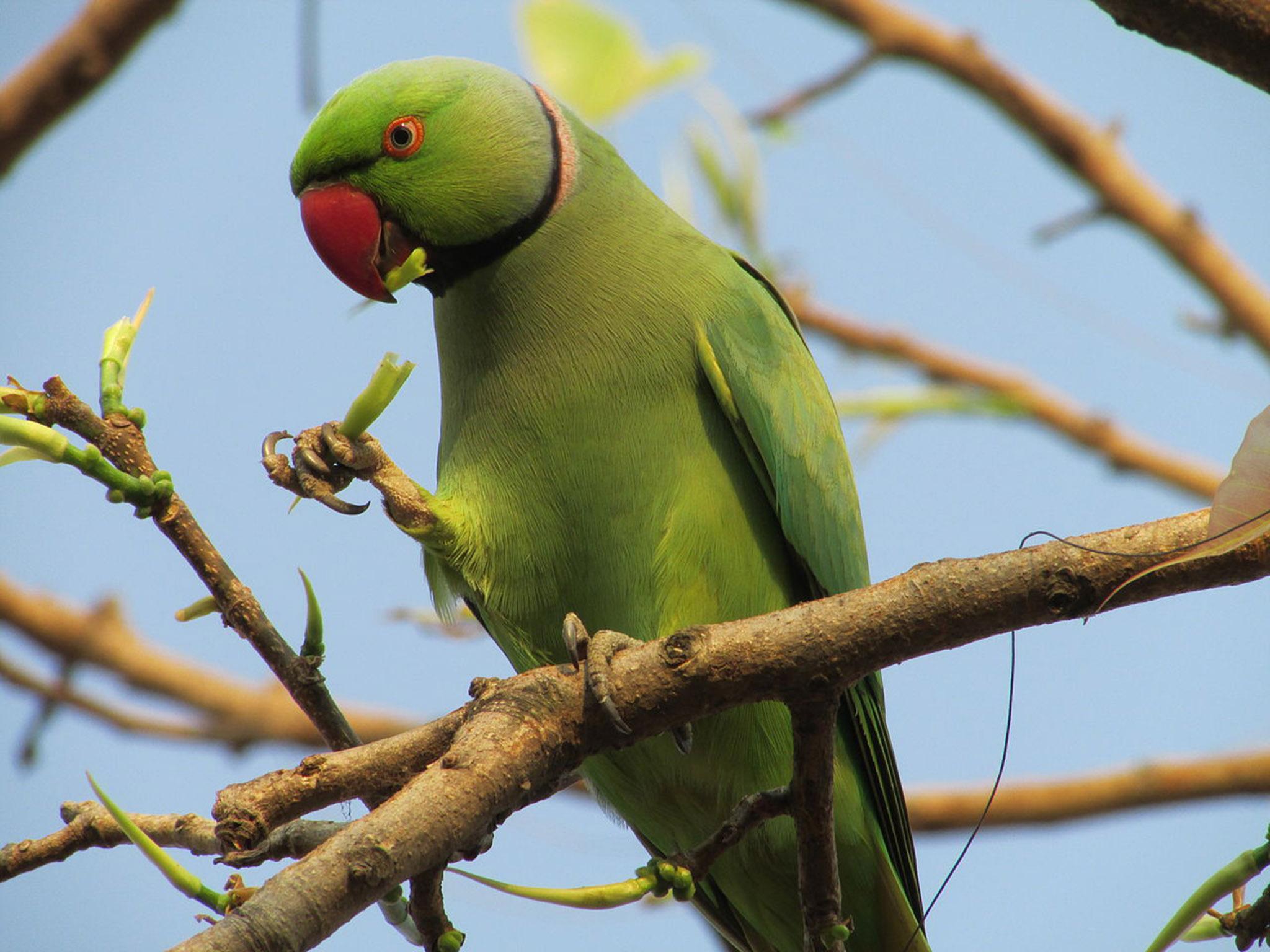Super ants, mussels and scorpions: invasive species are the second biggest risk to global biodiversity
As a major campaign to save the red squirrel gets under way, Ashley Coates looks at some of the other alien species that have made their way to the UK

Your support helps us to tell the story
From reproductive rights to climate change to Big Tech, The Independent is on the ground when the story is developing. Whether it's investigating the financials of Elon Musk's pro-Trump PAC or producing our latest documentary, 'The A Word', which shines a light on the American women fighting for reproductive rights, we know how important it is to parse out the facts from the messaging.
At such a critical moment in US history, we need reporters on the ground. Your donation allows us to keep sending journalists to speak to both sides of the story.
The Independent is trusted by Americans across the entire political spectrum. And unlike many other quality news outlets, we choose not to lock Americans out of our reporting and analysis with paywalls. We believe quality journalism should be available to everyone, paid for by those who can afford it.
Your support makes all the difference.Introduced from the US in the late 19th century, disease-carrying grey squirrels have brought about a collapse in the population of the UK’s indigenous red squirrel, from around 3.5 million animals down to 120,000.
While their red-haired cousins have gone into decline, the population of the invasive grey squirrel has ballooned to around 2.4 million individuals covering almost every corner of the country.
More than a century after the first greys arrived in the UK, conservation groups are now calling for a “red squirrel army” of up to 5,000 volunteers to help protect the reds, which they say could be extinct within 35 years without adequate protection.
The use of oral contraceptives as a tool to cut grey numbers has been approved by the Government, with scientists believing that over five years the plan would reduce the grey population by more than 90 per cent.
America has had its fair share of invaders too. In one of his final acts as President, Barack Obama signed an executive order instructing the country’s agencies to “[Safeguard] the Nation from the Impacts of Invasive Species”.
Signed in the Oval Office on 5 December, the order reinforces and expands on President Clinton’s Executive Order 13112 of 3 February 3 1999 (Invasive Species), and explicitly links the effects of climate change on the distribution of non-native plants and animals.
The motivation for this action was not solely the conservation of America’s indigenous wildlife. Disruptive alien species are causing a huge amount of damage to the US economy, with the most widely cited study estimating costs of around $120bn (£96bn) every year to the American tax payer.
According to the federal Fish and Wildlife Service, the US loses $13bn in crops to invasive insects every year. In the Great Lakes region alone, preventing outsider species from entering the country in the ballast or on the hulls of ships is costing $200 million to control annually.
Introducing new species can destabilise ecosystems by increasing competition for resources, bringing in new diseases, or establishing new predators to native species. The organisations involved in monitoring species invasions are also concerned about so-called “hybridisation”, where an introduced animal breeds with a native species to create a new and distinct family of animals, losing the original species and reducing biodiversity.

The International Union for Conservation of Nature (IUCN) has estimated that in the last 50 years, invasive non-native species (INNS) were the most common threat associated with the extinction of mammals, reptiles and amphibians worldwide. For other animals, INNS have been the second most common threat – after habitat destruction – associated with extinction.
As more people travel and international shipping grows each year, the problem is only getting worse. The numbers of invasive species in Europe went up by 76 per cent in the years between 1970 and 2007.
In the UK, London and the South East is a particular hotspot for invaders, from Chinese mitten crabs burrowing into the banks of the Thames, to Asian super ants eating through electric cabling in Hendon. London’s financial hub in the former Docklands area has been home to a colony of yellow-tailed scorpions since Victorian times.
These creatures can be more than just a local curiosity; the super ant’s interest in chewing through wires makes them a potential fire hazard, while the invasive ring-necked parakeets are considered such a threat to crops that they can be shot without a permit if they are known to be causing damage to agriculture.

The ring-necked parakeet is a bright green species of parrot, native to west Africa. Some time in the 1970s, birds released or lost by their owners started breeding, and there are now around 30,000 parakeets in London alone, making them almost as numerous as the urban fox.
Other species are more innocuous but equally disruptive. The quagga mussel looks like a paler version of the native blue mussel, yet this invader from the Caspian Sea is considered one of the greatest non-native risks to freshwater ecosystems in the UK.
According to the Non-Native Species Secretariat (NNSS), the quagga and zebra mussels that are establishing themselves in Britain can “significantly alter whole ecosystems by filtering out large quantities of nutrients and [are] also a serious biofouling risk – blocking pipes, smothering boat hulls and other structures”.
Over in the US, the Massachusetts Department of Conservation and Recreation is spending $250,000 in staff and $30,000 on equipment in an effort to combat their own invasion of quagga and zebra mussels.
The total cost of dealing with the 3,000 non-native invasive species in the UK is believed to be in the region of £1.7bn, and around £12bn for Europe as a whole.
“With travel becoming increasingly globalised, new INNS are going to continue to arrive all the time,“ says Camilla Morrison-Bell of the British Ecological Society and chair of the Wildlife and Countryside Link Invasive Non-Native Species working group.
“We are getting better at predicting the ones that will arrive and will be a problem. For those species, we need to be ready to react straight away and remove them from the wild before they can become established.”
While many species are now well established in their foreign territories, there are measures individuals can take to limit their spread. The NNSS recommends a “Check, Clean, Dry” approach to people living, working or visiting areas known to be habitats for invasive species.
Very few scientists or campaign bodies advocate for significant culls of established invaders, but advise on limiting their spread. Karen Harper, manager of the London Invasive Species Initiative, says “you can help stop the spread of invasive non-native species like quagga mussel by following good biosecurity and applying ‘Check, Clean, Dry’ every time you are out on our waterways. For quagga mussel this is especially important as the larvae are invisible to the naked eye, so you might not be able to see what you are transporting.”

Collecting and reporting data to the NNSS and smaller local organisations can also help authorities tackle the spread of particularly virulent and damaging species such as Japanese knotweed.
Campaigners are particularly concerned about the impact of pond owners dumping aquatic plants into local rivers, where they smother the pre-existing species and reduce the amount of oxygen in the water, causing harm to fish.
For its part, the UK Government last month committed £2.75m to help the country’s Overseas Territories develop better biosecurity and provide the islands with access to the UK’s “risk analysis, pathway management, pest identification, horizon scanning, contingency planning, rapid response capability and species management”.
“We take biosecurity extremely seriously and are committed to doing all we can to prevent pests and INNS reaching our borders”, a Defra spokesperson told me.
“We work closely with neighbouring countries, the wider international community, industry, charities, landowners and the public to reduce the risks.”
Preparation is key, and was proven to be effective in October last year, when the National Bee Unit successfully contained the arrival of the honey-bee-eating Asian hornet in the West Country.
Accidentally introduced to France via a shipment of pottery in 2004, Defra had been expecting to deal with the Asian hornet for a number of years and had a ”well-established protocol in place to eradicate them”.
The Bee Unit implemented a three-mile surveillance zone around an Asian hornet nest near Tetbury, Gloucestershire, and was quickly able to announce the outbreak had been contained, but it’s unlikely to be the last time the Asian hornet visits the UK.
“We are still likely to see the impacts of INNS get worse before they get better,” says Camilla Morrison-Bell.

“My fear is that many INNS are already here but largely undetected and not causing much of a problem in the wild. However, they often have what is referred to as a lag-time, before the population gets to a point where the species has a noticeable negative impact. By this time it can be too late.”
Celebrity chef Gordon Ramsay has advocated fishing and eating the Chinese mitten crab living in the River Thames, a strategy that has worked well in the US, where coastal communities have been dealing with a proliferation in non-native lion fish. Not every species arriving in the UK is as edible as the mitten crab, making preventative measures or selective eradication more viable approaches to controlling populations.
“We would like to see the EU Invasive Alien Species Regulation fully transposed into domestic legislation once the UK leaves the EU, particularly as this places a strong emphasis on preventing INNS arriving,” Camilla Morrison-Bell tells me.
“We would also like to see a presumption against the release of any non-native species in England, unless it has been listed as being safe for the new environment. This is already the case in Scotland. We need a coordinated approach across Britain.”
Even with better biosecurity, improved monitoring and putting the more tasty invasive species on the menu, these plants and animals are here to stay, and the costs of controlling their populations is going up every year.
Join our commenting forum
Join thought-provoking conversations, follow other Independent readers and see their replies
Comments